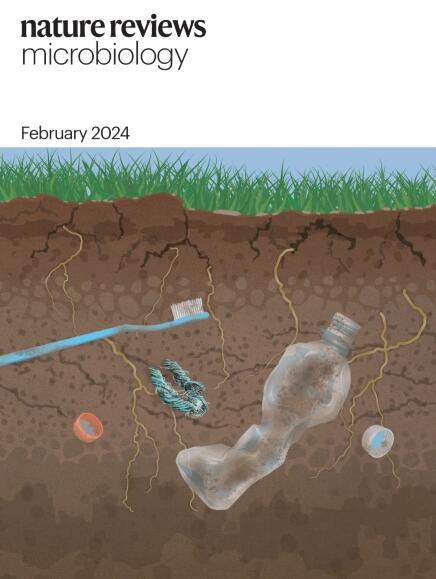伤口微生物群:伤口愈合受损和感染的微生物机制
IF 69.2
1区 生物学
Q1 MICROBIOLOGY
引用次数: 0
摘要
皮肤屏障保护人体免受外源性和致病性微生物的入侵。皮肤屏障一旦被破坏,下层组织就会受到微生物的污染,从而导致感染、延迟愈合以及组织和器官完整性的进一步丧失。伤口延迟愈合和慢性伤口与糖尿病、高龄、免疫抑制和自身免疫性疾病等合并症有关。伤口微生物群会影响多因素修复过程的每个阶段,并影响感染的可能性。通常感染伤口的病原体,如金黄色葡萄球菌和铜绿假单胞菌,会表达专门的毒力因子,以促进粘附和入侵。生物膜的形成和其他多微生物的相互作用会导致宿主免疫逃避和对抗菌疗法产生抗药性。厌氧菌、真菌和病毒病原体以及新出现的耐药微生物给诊断和治疗带来了独特的挑战。在本综述中,我们将探讨目前对伤口中微生物如何影响皮肤修复过程并通过对宿主和其他伤口微生物居民的作用导致感染的认识。本文章由计算机程序翻译,如有差异,请以英文原文为准。

The wound microbiota: microbial mechanisms of impaired wound healing and infection
The skin barrier protects the human body from invasion by exogenous and pathogenic microorganisms. A breach in this barrier exposes the underlying tissue to microbial contamination, which can lead to infection, delayed healing, and further loss of tissue and organ integrity. Delayed wound healing and chronic wounds are associated with comorbidities, including diabetes, advanced age, immunosuppression and autoimmune disease. The wound microbiota can influence each stage of the multi-factorial repair process and influence the likelihood of an infection. Pathogens that commonly infect wounds, such as Staphylococcus aureus and Pseudomonas aeruginosa, express specialized virulence factors that facilitate adherence and invasion. Biofilm formation and other polymicrobial interactions contribute to host immunity evasion and resistance to antimicrobial therapies. Anaerobic organisms, fungal and viral pathogens, and emerging drug-resistant microorganisms present unique challenges for diagnosis and therapy. In this Review, we explore the current understanding of how microorganisms present in wounds impact the process of skin repair and lead to infection through their actions on the host and the other microbial wound inhabitants. In this Review, Uberoi, McCready-Vangi and Grice explore the diversity of microorganisms present in wounds and examine the mechanisms through which they invade skin tissues, impair skin repair and cause infection.
求助全文
通过发布文献求助,成功后即可免费获取论文全文。
去求助
来源期刊

Nature Reviews Microbiology
生物-微生物学
CiteScore
74.00
自引率
0.50%
发文量
149
审稿时长
6-12 weeks
期刊介绍:
At Nature Reviews Microbiology, our goal is to become the leading source of reviews and commentaries for the scientific community we cater to. We are dedicated to publishing articles that are not only authoritative but also easily accessible, supplementing them with clear and concise figures, tables, and other visual aids. Our objective is to offer an unparalleled service to authors, referees, and readers, and we continuously strive to maximize the usefulness and impact of each article we publish. With a focus on Reviews, Perspectives, and Comments spanning the entire field of microbiology, our wide scope ensures that the work we feature reaches the widest possible audience.
 求助内容:
求助内容: 应助结果提醒方式:
应助结果提醒方式:


